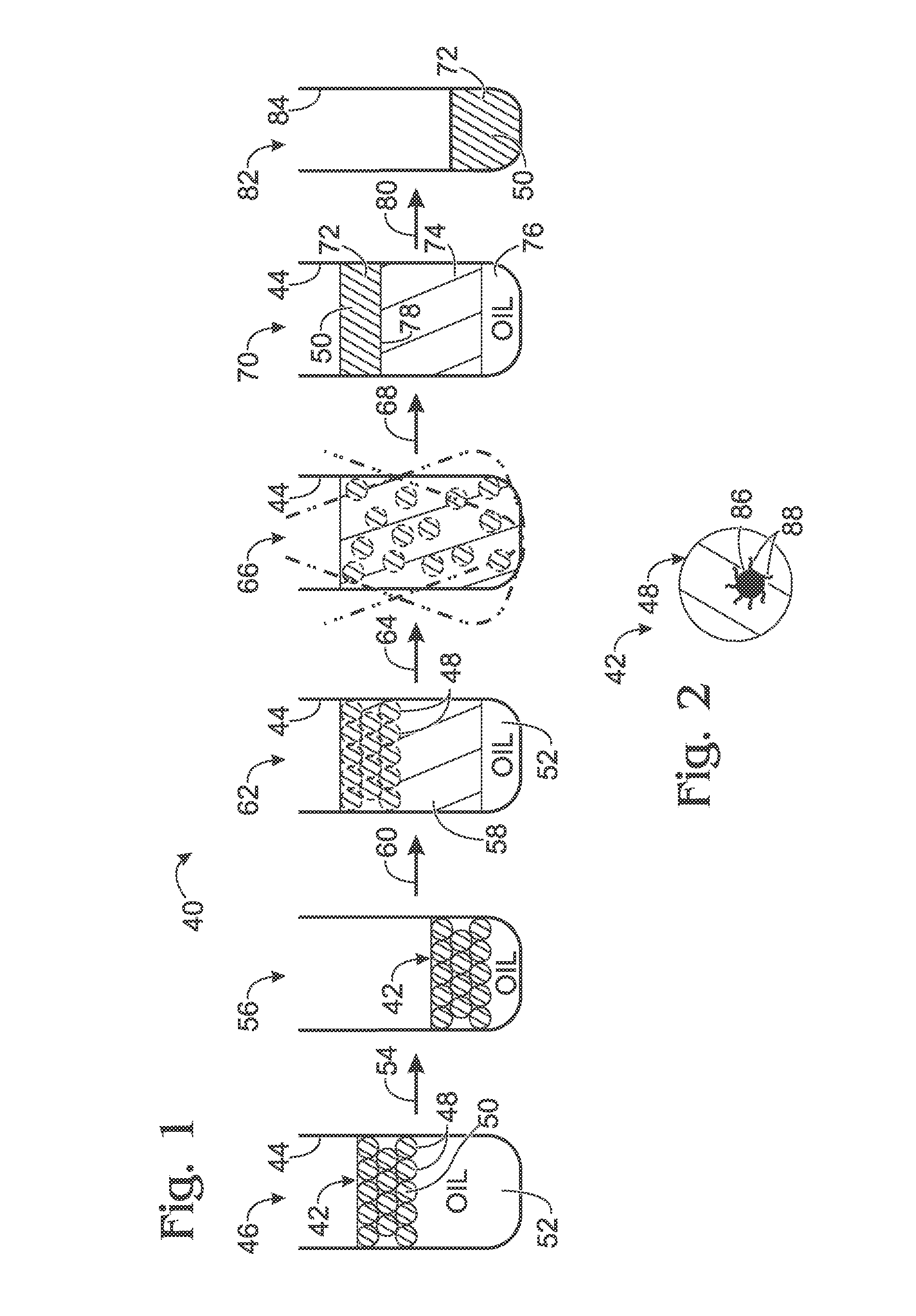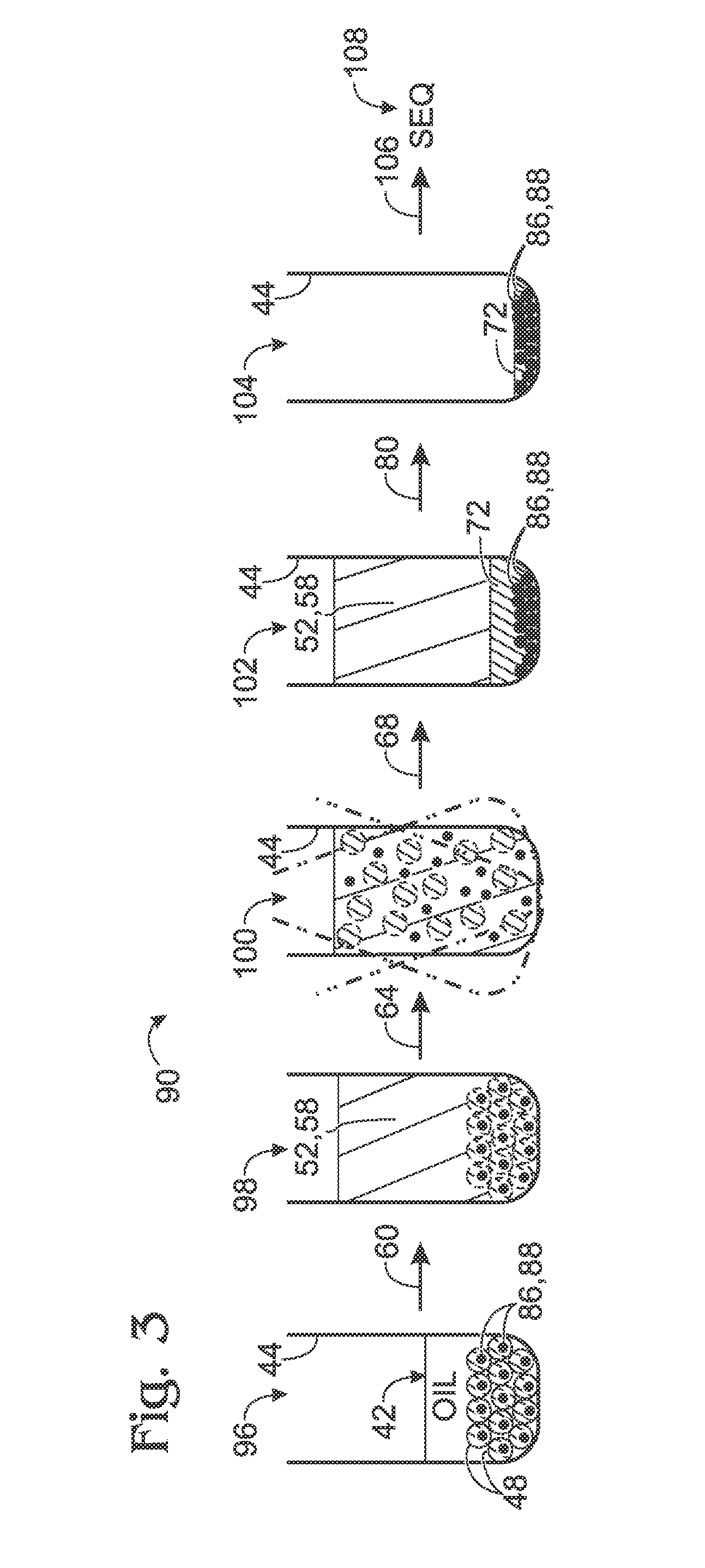Breakage of an emulsion containing nucleic acid
a technology of nucleic acid and emulsion, which is applied in the field of breaking an emulsion containing nucleic acid, can solve the problems that emulsions that are stable enough to retain their integrity during pcr amplification can be difficult to break
- Summary
- Abstract
- Description
- Claims
- Application Information
AI Technical Summary
Benefits of technology
Problems solved by technology
Method used
Image
Examples
example 1
Droplet Breakage Protocol
[0049]This example describes an exemplary, non-limiting, droplet-breaking protocol. There exists a need to harvest amplification products reliably and efficiently droplets of an emulsion. Physical-based methods typically involve creating mechanical shear forces to rupture the emulsion through multiple freeze-thaw cycles and / or centrifugation. Chemical methods utilized are dependent on the oil that is utilized to create a water-in-oil emulsion, and for silicone-based oils typically involve the use of a variety of organic solvents such as diethyl ether and ethyl acetate to remove the organic phase, coupled with precipitation to recover the desired product. This example describes a method for breaking emulsions created using fluorinated hydrocarbons, in particular those created for PCR through the inclusion of a stabilization reagent.
[0050]The following steps may be performed:
[0051]A) Following PCR in droplets, transfer droplets to 0.5 ml or 1.5 ml tubes (based...
example 2
Exemplary Utilities for Droplet Breakage
[0059]This example describes exemplary strategies that may benefit from use of the droplet breakage procedure disclosed here.
[0060]Droplet breakage may be performed after expansion of a diverse population by amplification. The amplification may be substantially unbiased across a diverse population of template species, to preserve representation of each species.
[0061]Droplet breakage may be performed after a selection or sorting procedure that enriches members of a nucleic acid population nonuniformly, i.e., in a biased manner. For example, the selection procedure may select for amplicons that amplify more efficiently in the droplets (e.g., that successfully amplify based on primer design criteria versus background / non-specific products). In other cases, the droplets may be sorted based on signals detected from the droplets, and then sorted droplets may be coalesced by emulsion breakage. In yet other cases, the selection procedure may be perfor...
PUM
| Property | Measurement | Unit |
|---|---|---|
| weight | aaaaa | aaaaa |
| weight | aaaaa | aaaaa |
| weight | aaaaa | aaaaa |
Abstract
Description
Claims
Application Information
 Login to View More
Login to View More - R&D
- Intellectual Property
- Life Sciences
- Materials
- Tech Scout
- Unparalleled Data Quality
- Higher Quality Content
- 60% Fewer Hallucinations
Browse by: Latest US Patents, China's latest patents, Technical Efficacy Thesaurus, Application Domain, Technology Topic, Popular Technical Reports.
© 2025 PatSnap. All rights reserved.Legal|Privacy policy|Modern Slavery Act Transparency Statement|Sitemap|About US| Contact US: help@patsnap.com


